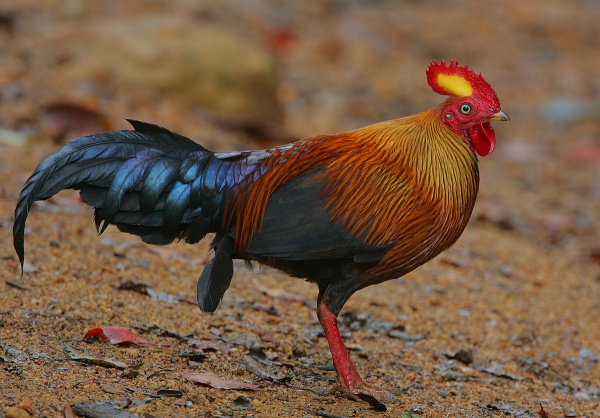Facts About Sri Lankan junglefowl
The Sri Lankan junglefowl, or Ceylon junglefowl, is a distinctive bird endemic to Sri Lanka and holds the honorable status of the country's national bird. This species belongs to the Galliformes order and is notably related to the red junglefowl, the wild progenitor of domestic chickens. Intriguingly, recent genetic studies have revealed that the Sri Lankan junglefowl is actually more closely related to the grey junglefowl than to the red junglefowl.
Male and female Sri Lankan junglefowls exhibit marked sexual dimorphism. Males are larger and display vibrant plumage, with pronounced wattles and combs. Females, in contrast, are smaller and have dull brown feathers that provide camouflage. These birds predominantly forage on the ground, feeding on seeds, fruits, and insects. For nesting, females lay eggs in nests that the males help protect.
One fascinating aspect of the Sri Lankan junglefowl's reproductive strategy is known as facultative polyandry. This means a single female mates with multiple males within a group, similar to the social structure observed in lion prides. The eggs have a relatively short incubation period, and once hatched, the chicks require a diet of live food to thrive. In captivity, these birds are susceptible to common poultry diseases caused by bacteria.
Sri Lankan junglefowl inhabit forests and scrublands, with notable populations in regions such as Kitulgala, Yala, and Sinharaja. Despite their significance and unique characteristics, they are rarely kept in captivity due to their specific dietary requirements. A historical anecdote of interest includes Charles Darwin's rejection of a description of a tailless mutant of the Sri Lankan junglefowl, which had been documented by Coenraad Jacob Temminck in 1807.

 India
India